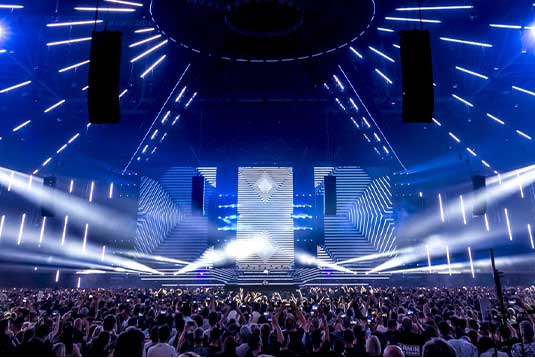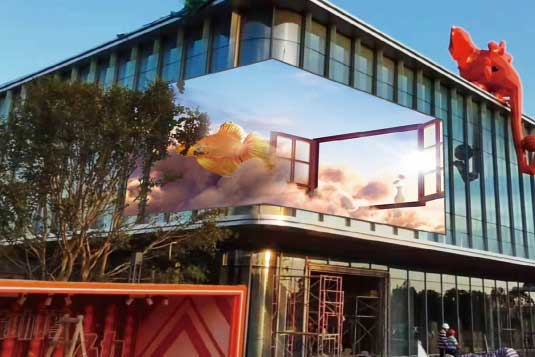COB vs SMD: Which LED Technology Reigns for Broadcast Studio Backgrounds
Introduction
In the world of broadcast studios, the quality and reliability of the LED screens used as backgrounds are paramount. Two leading technologies in this space are Chip-On-Board (COB) and Surface-Mounted Device (SMD) LEDs. This blog post will compare these two technologies, examining their pros and cons, and determining which one is better suited for broadcast studio backgrounds. We will also include visual aids to help illustrate the key points.
Understanding COB and SMD LED Technologies
Chip-On-Board (COB) LEDs:
-
Definition: COB technology involves mounting multiple LED chips directly onto a substrate, which is then encapsulated with a protective layer. -
Advantages: -
Better Heat Dissipation: The direct mounting and encapsulation allow for more efficient heat dissipation, leading to longer lifespan and higher reliability. -
Higher Brightness and Uniformity: COB LEDs can achieve higher brightness levels and more uniform light distribution. -
Durability: The encapsulation provides better protection against dust, moisture, and physical damage.
-
Surface-Mounted Device (SMD) LEDs:
-
Definition: SMD technology involves mounting individual LED chips on a printed circuit board (PCB) using surface-mounting techniques. -
Advantages: -
Cost-Effective: SMD LEDs are generally less expensive to produce and install. -
Flexibility: SMD LEDs can be easily replaced if damaged, making maintenance simpler. -
Wider Availability: SMD LEDs are more widely available and have a broader range of color and brightness options.
-
Comparison Table: COB vs SMD LEDs
| Feature | COB LEDs | SMD LEDs |
|---|---|---|
| Heat Dissipation | Excellent | Good |
| Brightness | High | Medium to High |
| Uniformity | Very High | High |
| Durability | High | Medium |
| Cost | Higher | Lower |
| Maintenance | More complex | Easier |
| Availability | Limited | Widespread |
Visual Representation: Brightness and Uniformity
-
图表描述:这是一个散点图,显示了COB和SMD LED在亮度和均匀性方面的表现。横轴表示亮度(单位:尼特),纵轴表示均匀性(从低到高)。可以看到,COB LED在亮度和均匀性方面都优于SMD LED。
Real-World Applications in Broadcast Studios
-
High-End Broadcast Studios:
-
Example: A major news network uses COB LED screens for their primary studio backgrounds. The high brightness and uniformity ensure that the visuals are clear and consistent, even under the bright studio lights. The durability and heat dissipation properties of COB LEDs also make them ideal for long-term, continuous use.
-
-
Budget-Conscious Studios:
-
Example: A local TV station opts for SMD LED screens due to budget constraints. While they may not achieve the same level of brightness and uniformity as COB LEDs, SMD LEDs provide a cost-effective solution that still delivers good image quality. The ease of maintenance and wider availability of SMD LEDs make them a practical choice for smaller studios.
-
-
Specialized Productions:
-
Example: A production company specializing in high-end commercials and documentaries uses COB LED screens for their background displays. The superior image quality and reliability of COB LEDs are essential for capturing high-quality footage that meets the demanding standards of their clients.
-
Pros and Cons
COB LEDs:
-
Pros: -
Better heat dissipation -
Higher brightness and uniformity -
Increased durability
-
-
Cons: -
Higher cost -
More complex maintenance -
Limited availability
-
SMD LEDs:
-
Pros: -
Cost-effective -
Easy to replace and maintain -
Wider availability
-
-
Cons: -
Lower heat dissipation -
Less brightness and uniformity -
Lower durability
-
Conclusion
Both COB and SMD LED technologies have their strengths and weaknesses, and the choice between them depends on the specific needs and budget of the broadcast studio. For high-end studios requiring the best possible image quality, durability, and performance, COB LEDs are the preferred choice. However, for budget-conscious studios or those with simpler requirements, SMD LEDs offer a cost-effective and practical solution.



-800x600.jpeg)